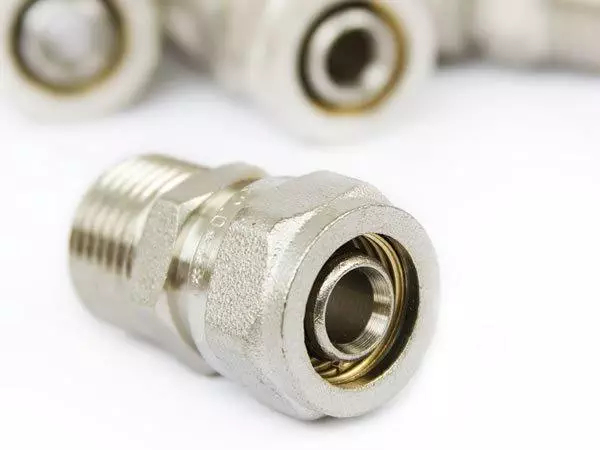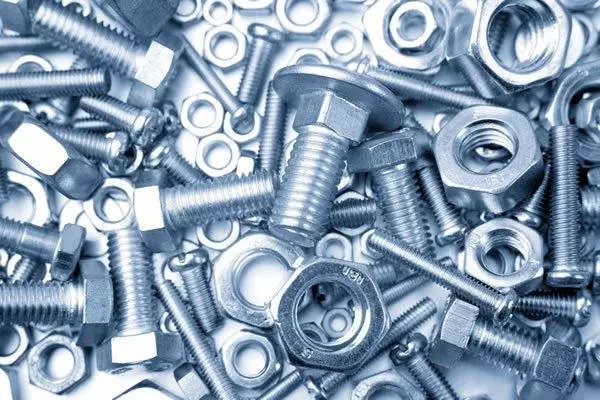ZINC ELECTROPLATING
The greatest enemy of all types of metal is rusting and corrosion. The corrosive effect of rust is very destructive. Reports from various institutes show that the cost of losses in the United States alone on rusting is about $276 billion each year and a global figure of about $1 trillion. The industries affected by this devastating effect of rusting includes manufacturing, production, transportation, etc. Zinc electroplating is used to stop rust and corrosion.

Why is zinc electroplating done?
The fundamental aim of zinc electroplating is to protect metals from rust or corrosion. Zinc plated coatings are also known as sacrificial coatings because the zinc coating sacrifices itself to protect the underlying metal from corrosion. In order to protect metals such as iron and steel from rusting, a process known as zinc electroplating is used. Zinc electroplating has to do with the electro-deposition of a thin layer of zinc metal on the surface of another metal which is known as substrate. The zinc coating serves as physical protection which prevents rust from affecting the underlying metal surface. The reason why zinc is chosen is that of its ability to fight corrosion.
In galvanization, zinc electroplating is the most common and widespread. For this reason, one-third of all zinc metals is used for galvanizing which is the coating of a metal surface to protect such a metal against rust. Zinc in most cases is exposed to the atmosphere, and as a result, zinc combines with oxygen in the moist atmosphere to produce zinc oxide. Since the air found in the atmosphere is moist, zinc combines with the water in the air moisture to produce zinc hydroxide. Likewise, the zinc hydroxide can combine with carbon dioxide found in the atmosphere to produce a sealed and insoluble grey layer of zinc carbonate which sticks to the zinc beneath thereby protecting it from rusting. In the automobile industries, zinc plating is usually used to preserve some critical parts of machines and vehicles such as brake calipers, screws, pipes, and bolts. Zinc plating is also used in the electrical industries to protect electrical transmission equipment. Zinc plating is also used in the construction of armories such as armored tanks and guns.
The temperature in which zinc electroplating can withstand
Zinc electroplating can tolerate temperatures of about 120°F which has aided to lower cost but similar to other forms of electroplating, and zinc electroplating has its limitations. Zinc plating cannot withstand temperatures that exceed 500°F because its protective corrosion ability begins to decrease if the temperature exceeds 212°F. Generally, zinc plating should not be done if it is exposed to temperatures that exceed 500°F.
Colors and types
Zinc electroplating is made of several colors, but each color is as a result of the methods of formation that is used which means that the effect of corrosion and rusting property differs from each other.
- Yellow Zinc Coating: This zinc coating is generally useful in the automobile industry and produces a high level of resistance against rusting.
- Black Zinc Coating: It is a black oxide and can be a greyish green color, or as a natural black coating. The greyish green color will usually produce rusting resistance that is slightly better.
- Blue Zinc or Clear Zinc: This type of coating formulation tries to produce some amounts of rusting protection, although it is viewed as more efficient environmentally.
- Acid Zinc: The acid zinc coating varies from other forms of zinc coating since cyanide is not added to the coating bath. Zinc acid has a significant edge that is useful when it is used on difficult substrates.
A testing method the American society set up has a pattern for classifying zinc which is by corrosion level of resistance a zinc electroplating can provide to the underlying metal. This helps individuals and industries to determine the ideal and best zinc coating for metals. There are about four various levels of layer which ranges from mild indoor coating to very suitable coating for outdoor environments. The greater the zinc coating thickness, the higher the protection against corrosion.
Other benefits of zinc electroplating
Corrosion protection is not the only advantage when considering zinc electroplating. There are other potential benefits associated with zinc electroplating, and they include the following:
Cost effective: Zinc as an element found on the earth crust is one of the abundant metals and more affordable metal used for electroplating. In the aspect of industrial and economic electroplating, zinc is a perfect alternative.
Luster finishing: Electroplating is often used to improve the appearance of the surface of a metal which in turn makes the material to become more attractive and prospective to marketers. Zinc plating can produce a high amount of brightness similar to chromium. Additives are used to control the level of brightness of zinc plating. An enormous range of colors available in zinc plating opens a tremendous opportunity of adaptation for making the choice of which finishing is best.
Appearances: zinc electroplating can be made in an enormous range of textures and structures. Surfaces that are either smooth plain or a tough and spangle pattern are done with ease and stress-free.
Application: Zinc electroplating is much easier to apply, and zinc plating procedures end up in a stress-free act that will not destroy the underlying material. Additionally, zinc should be applied to an enormous range of plating material features.
Compatibility: Since zinc electroplating is being used by either rack or barrel plating procedures, zinc plating is used to suit different types of varying sizes and extreme volumes.
Fine undercoat: If the material that is involved in the zinc coating is either painting or electrical coating, zinc electroplating will work effectively as undercoat as a result of its exceptional adhesive properties. This, in turn, would improve the rust resistance of the coated surface.
Ductility: zinc is a very malleable metal which means that it can be stretched into various lengths and can be made into various shapes. This quality makes it easier for zinc to take the form of the underlying material.
Zinc Electroplating Longevity
There are several factors that determine how long the longevity of a zinc plated material and its corrosion protection property. The Quality of the zinc coating is very imperative. For this reason, it is necessary for an individual or company to carefully choose the pattern of zinc electroplating they are to make use of. Coatings that are thick and applying the best post-treatment products can also be of great value in increasing the capability of protection of a zinc electroplating. The environment also plays a high role in the formation of corrosion, and this also affects the longevity of a zinc coating.
Zinc Electroplating Methods
There are two basic methods used for zinc electroplating, and they are rack and barrel zinc electroplating methods. In the use of the rack method, the parts are attached to a machine during electroplating to hold them and prevent them from being damaged. In the case of Barrel zinc electroplating, the elements are placed inside a unique vessel which contains the plating bath. During the plating process, the barrel is moved slowly as the parts are coated. Rack zinc plating is usually the best choice for little and delicate pieces that cannot hold the tumbling of a moving barrel. While a barrel zinc plating is often cheaper with less labor. It is better used when there are many parts to plate.
Another means of improving the corrosion resistance property of zinc electroplating is by means of the use of an after chromate treatment. But what is chromate? Chromate is a salt that has chromium combined with oxygen and chromate treatment is practised by dipping the zinc plated parts into a dichromate of chromium and oxygen. Putting zinc plated materials in dichromate solution as a segment of a post electroplating procedure can make the zinc plated materials to become less vulnerable to oxidation, and it will also help in providing another rust-resistant structure against moisture.
Another process that is used globally in zinc electroplating is employing after-treatment sealers, and this is carried out after chromate treatment. Such Sealer is used in both yellow, black and all types of zinc coatings and a sealer is functioned by making the chromate thin or sheet to become hard while it brings about a strong bond to the zinc coating. If a sealer is used by yoking it with a chromate substance, the sealer will increase rusting protection by over 100 percent.
Zinc Alloys
In maximizing the protective nature of zinc, electroplating materials with zinc alloys are much better than the electroplating of ordinary zinc. The zinc alloy that is globally used is zinc cobalt, and this has the characteristics of increasing rust resistance by five times. Zinc-cobalt is extremely ductile because its toughness remains after it is bent into varying shapes or deformed. Other zinc alloys that are commonly used are zinc iron, zinc tin, and zinc nickel. But despite the alloy that is used, zinc alloys provide a high level of corrosive resistance than electroplating with only zinc.
For more information on zinc electroplating, please contact Asheville Metal Finishing at 828.253.1476 or visit our website at www.ashevillemetalfinishing.com

